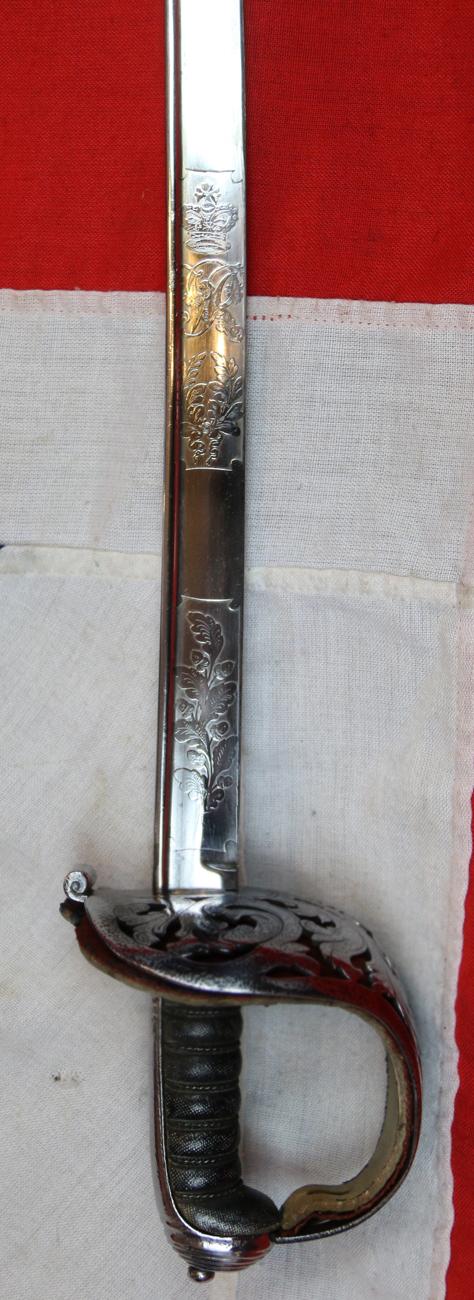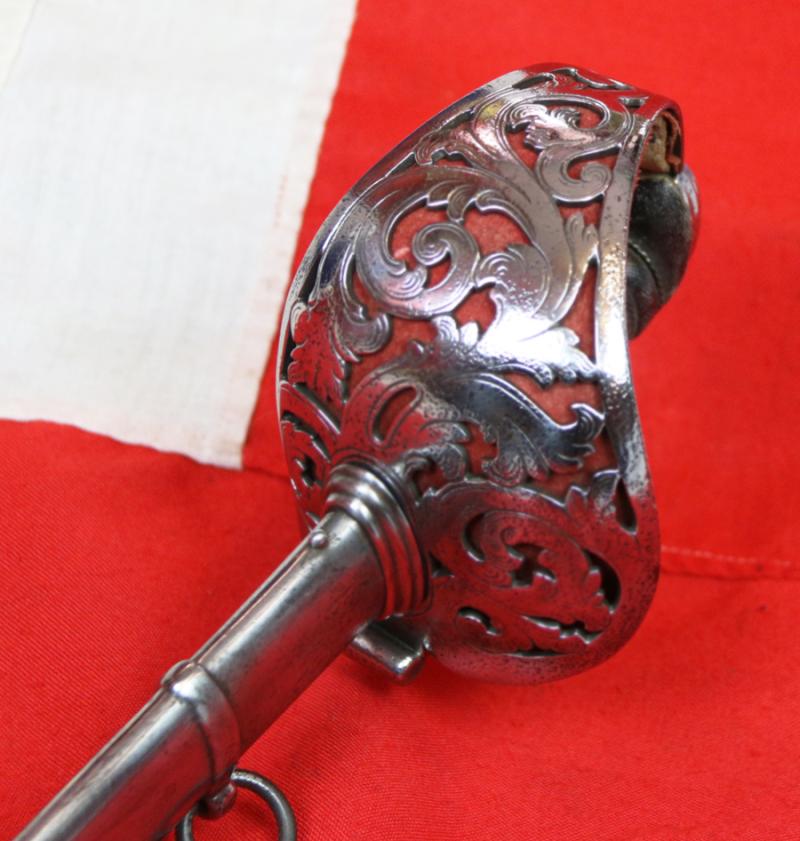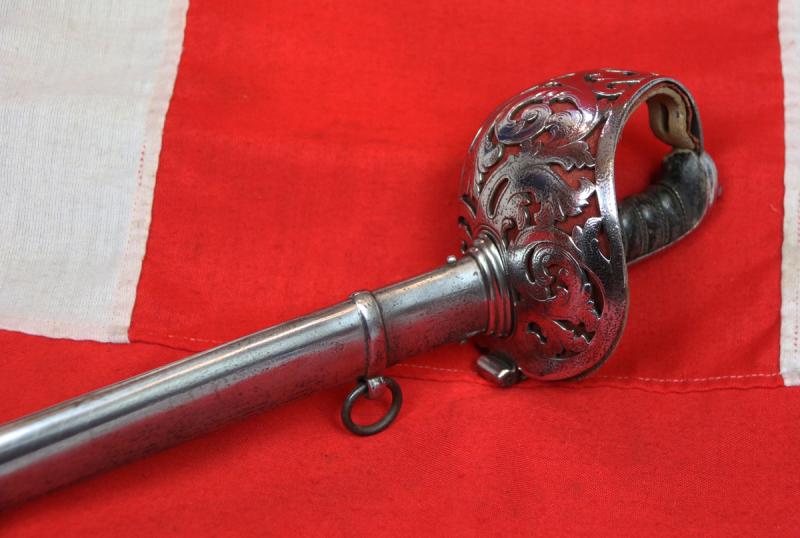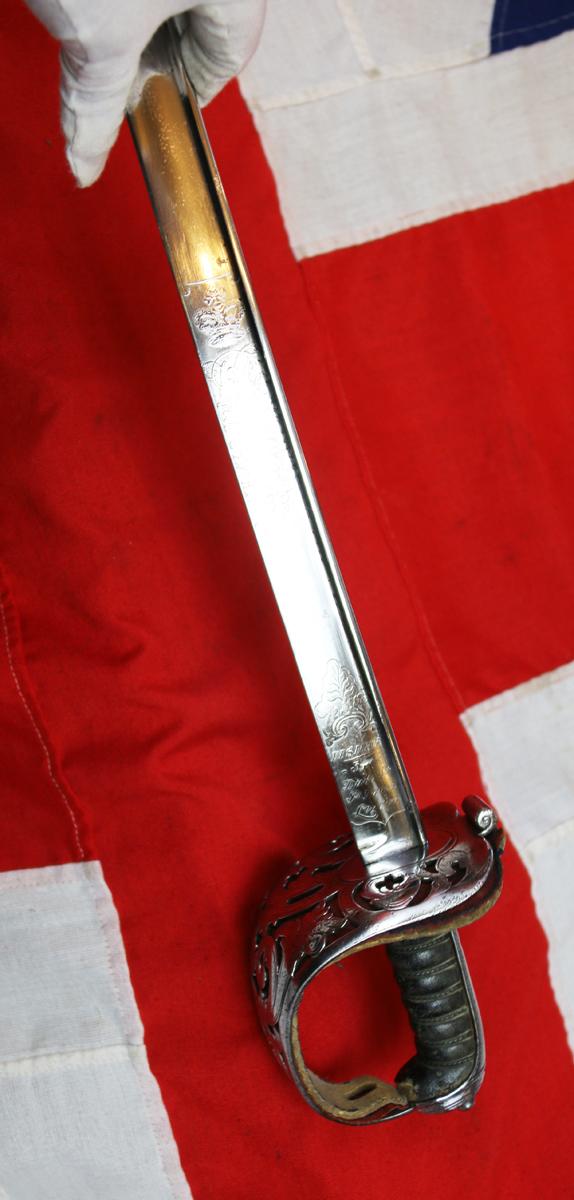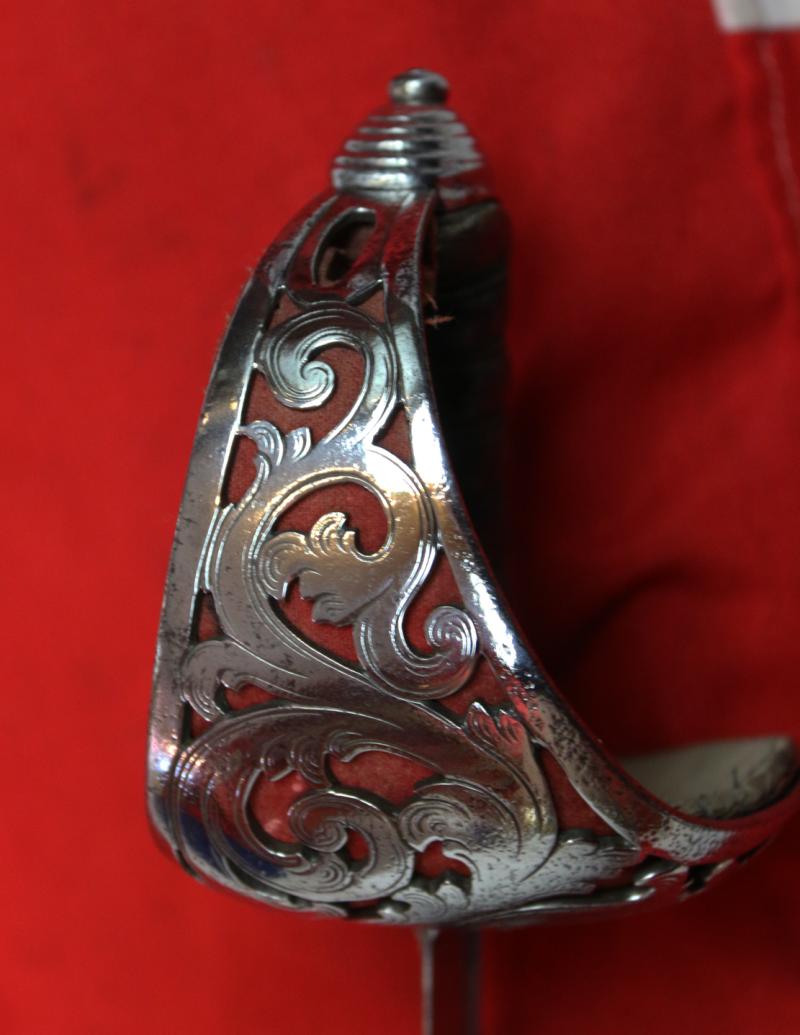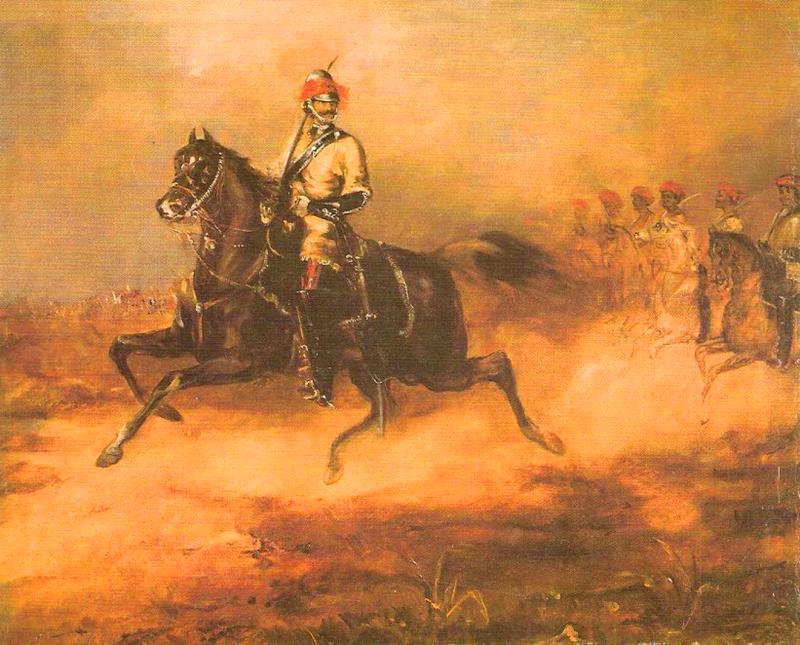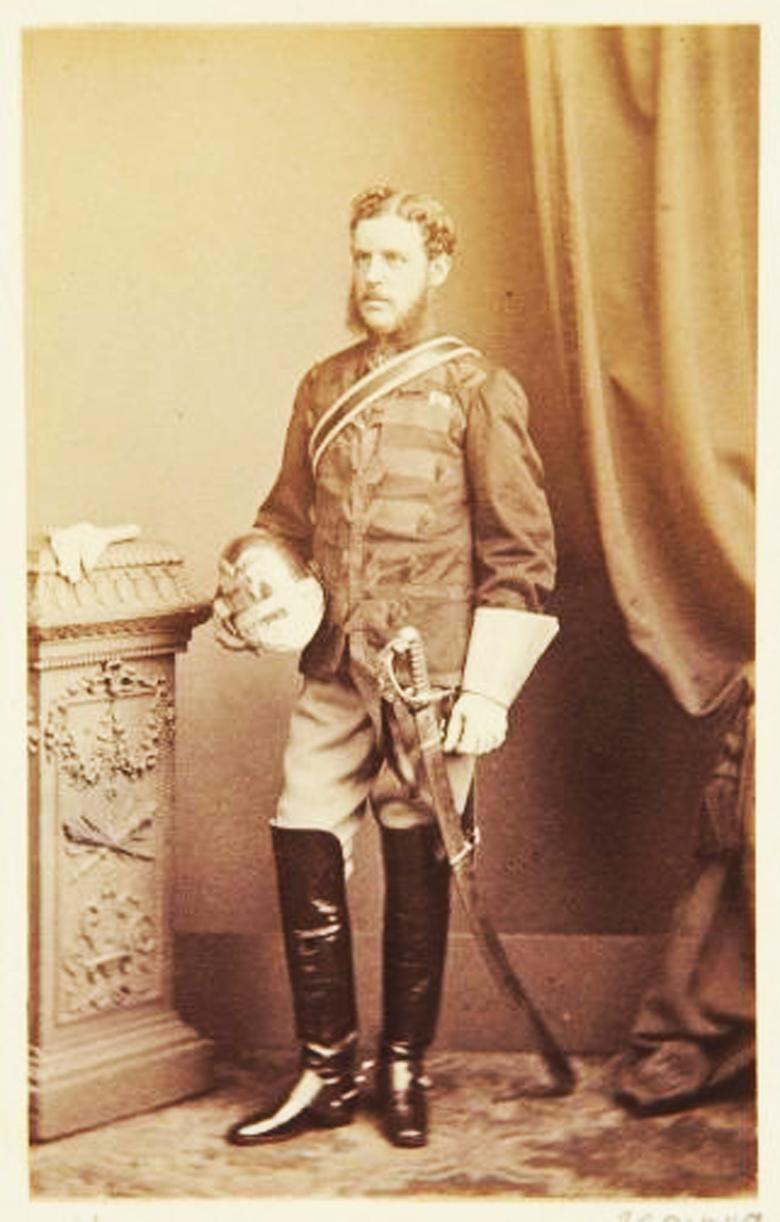British Early Victorian Jacob Pattern Pierced Scroll Hilted Cavalry Sword, With Quill Back Blade. Also Known As The Rare Scinde Horse Pattern. A Most Beautiful and Exceptionally Elegant British Cavalry Sabre From the Earliest Raj Period of India
Complete with its original red cloth lined original buff hide hilt liner.
Just returned from our conservation workshop, to clean, conserve and hand polish the sword throughout, that enquired over 40 hours specialist attention
An absolute beauty of a most rare British officers cavalry sabre of the 1850’s. A rare pre-Indian Mutiny ‘Jacob pattern’ Scind horse officers sword, it is a type of British cavalry officer's sword design that originated with John Jacob of the Scinde Irregular Horse. Bespoke commissioned from James Fisher of 37 Duke St, St James', London, in its earliest form with the quill pattern mounted combat blade.
John Jacob’s Scind Horse was a regiment of the highest honour and legend during the British Raj. The other ranks volunteers list was so long few of the eager volunteers manage to join the regiment. Despite having the criteria that every native volunteer accepted must provide his own steed and kit at their own expense. The men were the most skilled, loyal and devoted to be found anywhere in India, and their service included some of the most dangerous combat circumstances known to history.
Later on the pattern inspired the 1857 Royal Engineers Officer's sword, but by then to be mounted with the later, regular, Wilkinson sword pattern blade.
The Pierced Scroll {acanthus} Hilted Cavalry Sword with a Quill Back Blade is a unique and historically significant sword design, prized for its distinctive hilt and blade construction, optimized for mounted combat. The design is attributed to John Jacob, who raised the Scinde Irregular Horse.
The Scinde Horse, originally known as the 14th Horse, was an irregular cavalry regiment in British India. John Jacob, a prominent figure in the regiment, was instrumental in developing the sword pattern. The sword was popular during a period when swords were still in active use by cavalry, even as firearms were becoming more prevalent.
The Scinde Horse Pattern officer’s sword is distinct from other British cavalry swords, such as the Pattern 1821 Officers Undress Sword and the much later Pattern 1908 cavalry sword. The Pattern 1821 had a pipe-backed, double-edged blade, while the Pattern 1908 was the last service sword issued to the British cavalry and is considered by some to be the most effective.
The Scinde Horse Pattern sword is specifically recognized for its distinctive hilt and its association with the Scinde Horse regiment and John Jacob
The Quill Back Blade: First designed and used during the late Napoleonic wars
The blade's spine is hollowed out, creating a lighter blade with a distinctive profile. This design allows for a good balance between cutting and thrusting.
The Scinde Horse was raised to protect the British Caravans traversing the Spice Route - from the Bolan Pass in Afghanistan, to the Indus at Sukkur and then via Fort Abbas to Bikaner, Hissar and Delhi. The route through the Thar Desert via Jaisalmer was too difficult and dangerous. Since this involved corridor protection along the route, laying in ambush and also accompanying the caravans, they travelled mostly in civilian dress with weapons hidden to look inconspicuous. As a result, they were popularly called "The Scinde Irregular Horse". The term Irregulars is carried with pride amongst Scinde horsemen to this day as they have consistently surprised the adversary both in times of war and in competitions during peace to gain an upper hand. The Irregulars have always thought "out of the box" and accomplished the seemingly impossible.
The Regimental War Cry: The Scinde Horse Spirit is epitomised in its unique War Cry which spurs the Scinde Horse soldiers to decimate the enemy – Jai Mata Ki! Jai Chhatrapati Ki! Har Har Mahadev! Bole So Nihal – Sat Sri Akal! Hat Ja ___ Here I Come!!!
Battle of Meeanee
The Battle of Meeanee in The Illustrated History of the British Empire, as part of Sir Charles Napier's advance guard of his expeditionary force to conquer the province of Scinde, the Scinde Horse came across the forward elements of the combined forces of the Waziri tribals of Sind, led by Mir Nuseer Khan, entrenched in the Fulaillee Nala, near Meeanee, 23 miles ahead of Hyderabad, the capital town of Sind. Along with the Scinde Horse, there were amongst others, 5 Raj Rif (Napiers Rifles), the Cheshire Regiment and the Poona Horse, bringing up the rear, with the Madras Engineers providing engineering support. Not to be deterred, the regiment reconnoitred the area and made an outflanking move through dense forest and broken country, most unsuitable for horses. In an unparalleled outflanking manoeuvre in which over 70 horses died of fatigue, the Scinde Horse surprised the enemy by appearing at their rear and routed them in a cavalry charge, capturing the principal standard of Mir Nuseer Khan in the process. Seeing their Standard captured, the enemy capitulated and Sind was conquered. Sir Charles Napier cryptically signalled back "Pecavi" (I have Sinned (Sind)).
As a reward for this cavalry charge, unsurpassed in the annals of warfare, the regiment was presented eight cavalry standards (one per troop) and also allowed to retain Mir Nuseer Khan's principal standard, with the ‘Hand of Allah’ atop it, as its main Standard. This hand of Allah has played a major role in looking after the Regiment in times of need, ever since. The Scinde Horse has had the unique privilege of carrying Nine Standards on parade.
The Scinde Horse was tasked as the rear guard for the forces returning from the First Afghan Campaign. On 26 Feb 1878, it was at Khushk-e-Nakhud near the Afghan border that the regiment had taken an administrative halt and was carrying out saddlery inspection, that the early warning elements reported a large body of Afghan tribesmen approaching the camp. The men hastily gathered their weapons and mounted their horses, without saddles to engage the approaching enemy. The regiment, led by Maj Reynolds, charged the enemy before it could form up near the camp and routed them, killing many times their own numbers. Unfortunately, Maj Reynolds was martyred in this charge. Maj Douglas Giles, who was there, reduced an eyewitness account in a famous painting, 10' x 6', completing it in 1883. This painting was popularly displayed in the Louvre in Paris, from 1913 to 1921, till it found its final place in the Officers' Mess. It is unique in that it has every eye-catching detail. The colours used are from natural pigments and regain their brightness when exposed to the sun. In the Officers' Mess Ante Room, this painting is faced by a lone Horseman's Silver Trophy, representing Maj Reynolds. Ever after this Battle, The Scinde horseman never removes his sword from his person. "Taiyar-bar-Taiyar" they call it. That is why, in the Officer's Mess, now-a-days, where normally, the Belt is removed on entry, symbolising removal of the Sword, Scinde horsemen continue to wear their belt at all times
The antique militaria objects of British Raj Period are extremely scarce, and highly collectable throughout the entire world of militaria collectors, especially swords and headdress.
The sword is bright steel with highly attractive finish snd and a near mint VR cypher etched panelled blade with maker mark. The hilt is the pierced scroll ancanthus leaf pattern ceasing with its original wire bound sharkskin grip. It also has its very very rare, original red cloth lined original buff hide inner liner . The external steel does have traces of old surface age pitting.
Code: 25818


